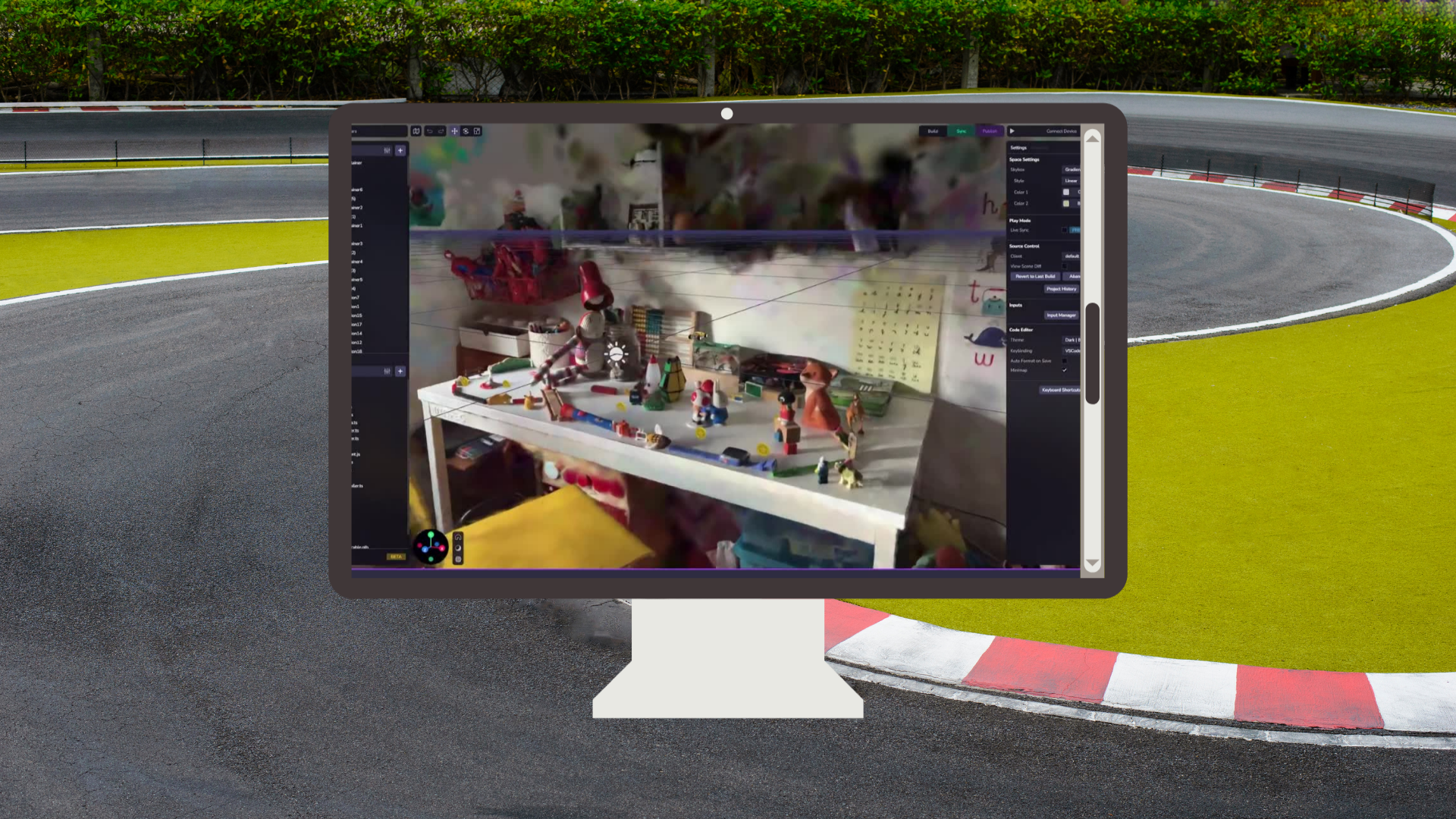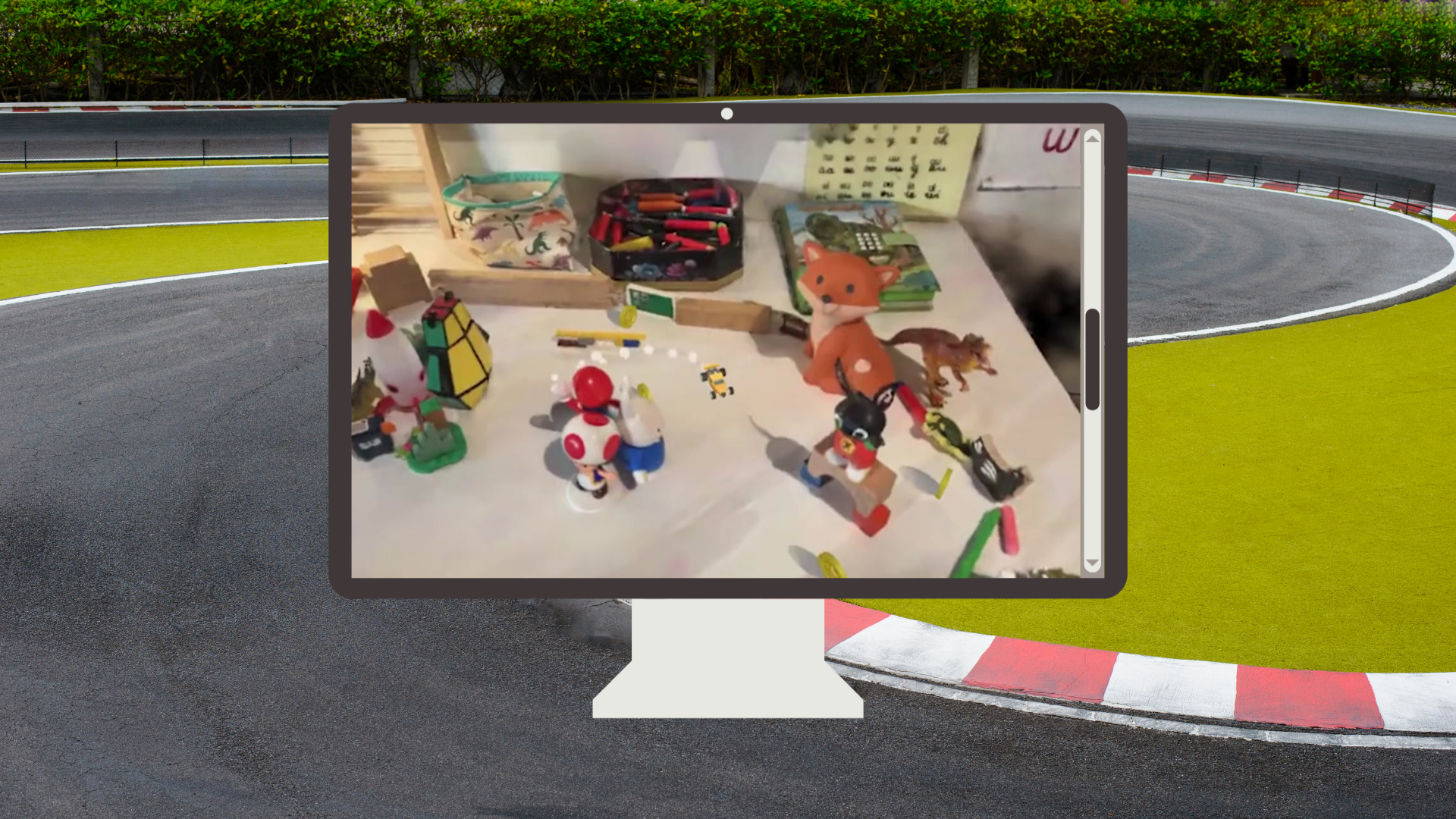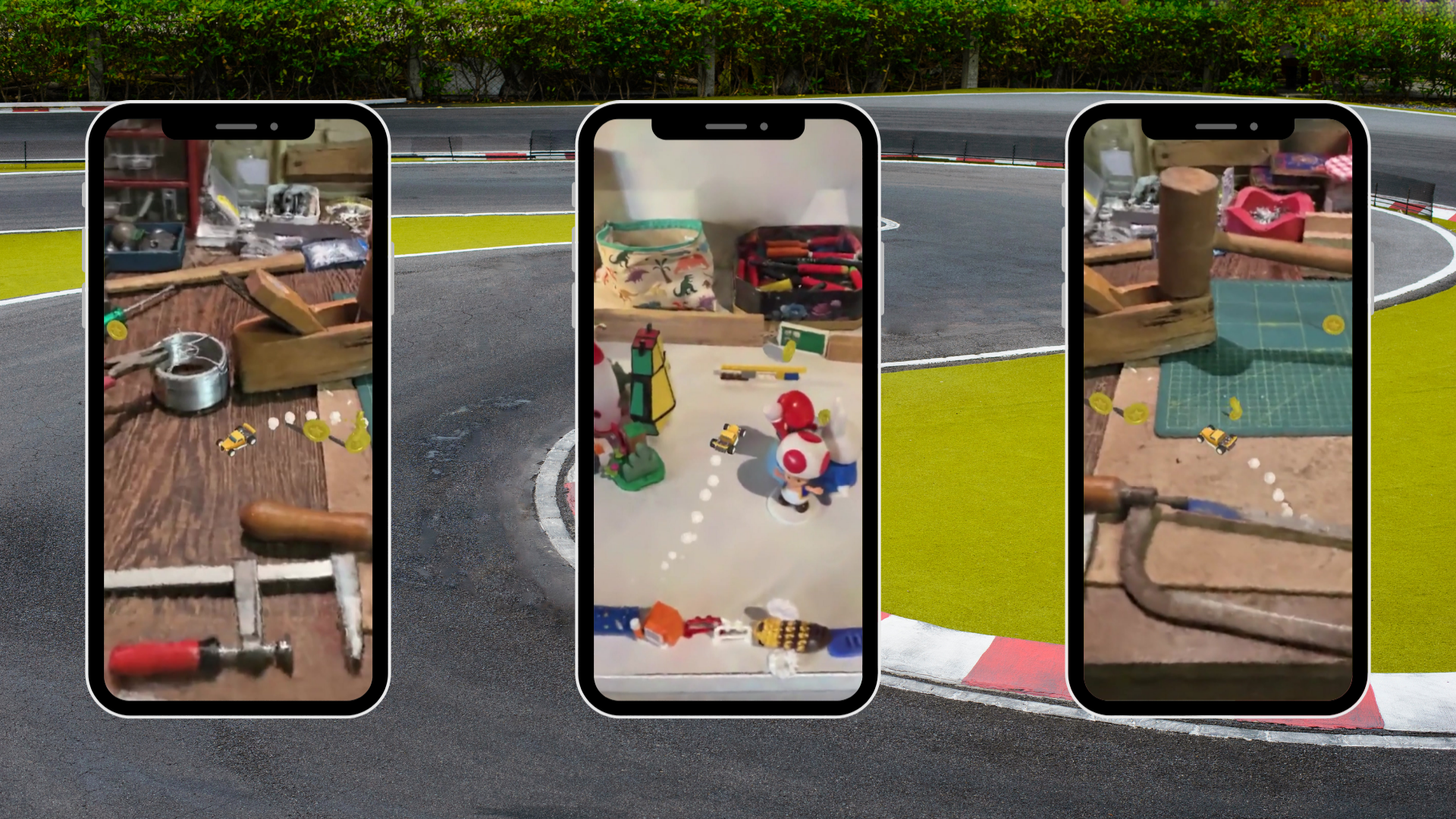8th Wall Blog
Behind the Build: Driving Engagement with Wonder Cars
How Wonderment by Design blended casual gaming and Gaussian splats using Niantic Studio

Wonder Cars is a charming game built in Niantic Studio, where real-world scans and stylized vehicles collide in a visually rich WebAR experience. Created by Wonderment by Design, the project explores how Gaussian splats can elevate level design, product storytelling, and immersive advertising—all while keeping things fun and approachable for casual gamers.
We sat down with the team to hear how they brought Wonder Cars to life, what tools helped accelerate the build, and where they see Niantic Studio pushing AR experiences next.

What inspired you to create Wonder Cars?
We wanted to experiment with casual gameplay wrapped in smaller, detail-rich scenes rendered using Gaussian splats. It’s a powerful format for marketing activations—where beautifully lit, photorealistic product showcases can be transformed into engaging, interactive experiences. By combining that with light gamification, we created a fun format with exciting potential for consumer engagement.
This wasn’t just a game—it was a testbed for how immersive web-first experiences can support storytelling, brand identity, and AR-based product visualization.
How did Niantic Studio help bring your vision to life?
Niantic Studio gave us the exact tools we needed—Scaniverse for capturing real-world environments, and a visual editor that made it intuitive to organize our scene structure using the Hierarchy system.
Some key features we relied on:
- Scaniverse for high-quality level scans
- ECS Event system to sync gameplay events like collisions with audio triggers
- Version control to easily collaborate across team members
- Three.js integration that allowed us to layer in custom logic and visuals
- The overall flexibility of combining standard JavaScript libraries with Studio’s component-driven architecture
The combination of visual workflows and code-level access gave us the freedom to balance design fidelity and game mechanics.
What challenges did you face during development?
The biggest hurdle was getting familiar with the new ECS system and visual editor, especially since our team had prior experience with A-Frame in the original 8th Wall environment. The Studio examples were a huge help in onboarding, but transitioning our thinking to ECS-based development took time.
Performance optimization was another key challenge. To ensure smooth playback on mobile, we had to:
- Compress and resize 3D models
- Resize all image assets
- Convert audio files to mono
- Audit and optimize our codebase
Once we tackled these areas, we saw noticeable improvements across devices.

What were your key steps in building Wonder Cars?
- Start with a prototype – We based our early work on the “Vehicle Controller” Studio example to quickly test core mechanics.
- Layer in features – Once we had movement and interaction working, we added new mechanics and level details.
- Prioritize responsive UI – Good UI takes time. We spent extra effort ensuring it adapted well to mobile.
- Test across platforms – Device testing was critical. We used both the host browser and physical hardware to validate performance.
What advice would you give other WebAR developers using Niantic Studio?
- Understand ECS – Get familiar with the architecture and how components communicate.
- Name everything consistently – It makes referencing objects in the Hierarchy much easier.
- Optimize early – Resize models and images, compress assets and test frequently.
- Test on real devices – Simulators are useful, but true performance feedback comes from physical hardware.
Whether you're building games or branded experiences, these habits will save time and improve final output.
Where do you see the future of AR—and Niantic Studio’s role in it?
We believe AR has huge potential—not just for gaming and advertising, but also for education, art, and immersive storytelling. Niantic Studio is well-positioned to support that growth. It’s accessible for both developers and non-developers thanks to the visual editor, and it’s extensible when deeper programming is needed.
Yes, it’s still in beta, but it’s headed in a promising direction. The more tools like this empower creators, the more we’ll see AR become a mainstream, everyday medium.
Take it for a spin

Wonder Cars stands as an example of how creative teams can use Niantic Studio to blend play, polish, and performance in WebAR. Whether you're interested in casual games or consumer-facing marketing, it’s a great inspiration for what’s possible. Want to build your own game? Get started today with your free 8th Wall account.
.png)